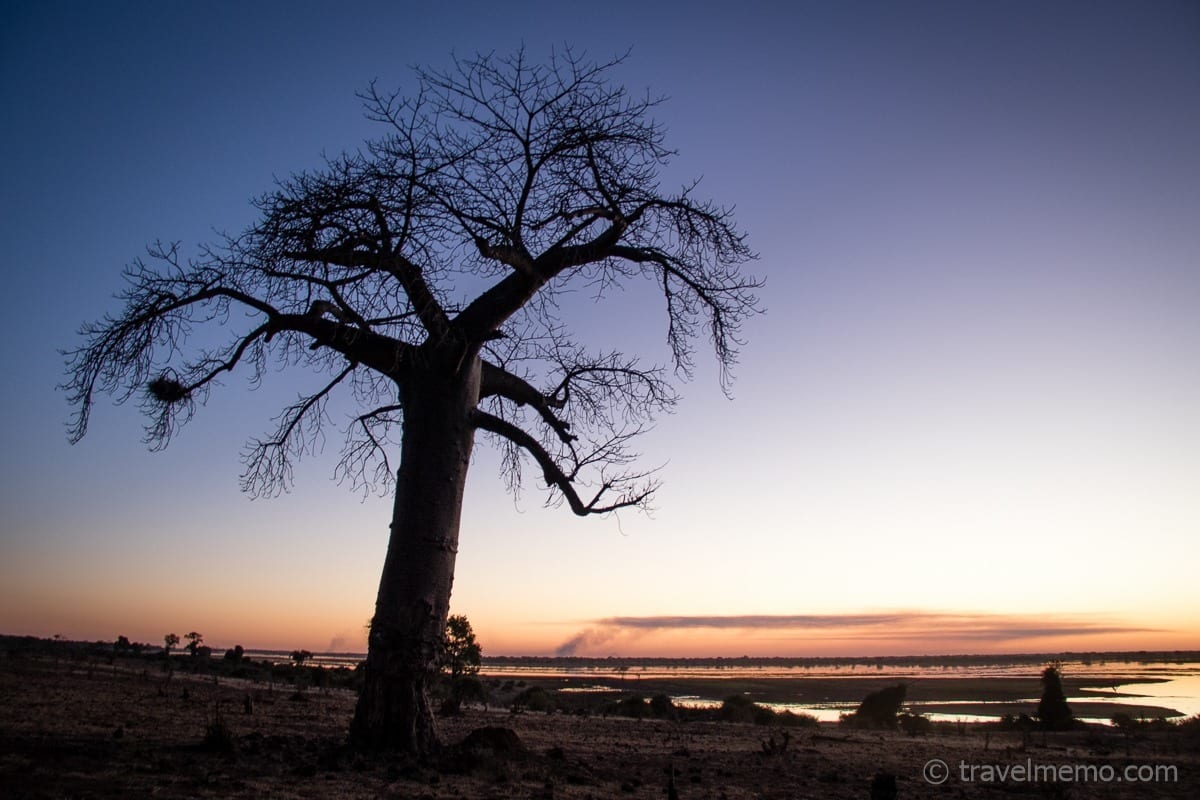Botswana’s Chobe National Park, which takes its name from the river flowing through it, shelters one of the highest concentrations of wildlife in Africa. The largest remaining population of elephants on earth survives here. For us it was reason enough to mount our telephoto lens and start stalking the huge beasts — eye to eye, so to speak!
For this part of our adventure, we “lodged” in the auspiciously-named Ngoma Safari Lodge (here is our review). Our guide, Mukamba – or “MK” as he introduces himself to simplify things – picks us up early in the morning for an all-day excursion through this famed national park.
For starters, MK takes us straight through the middle of the picturesque park on a tarred road. Already on this highway we encounter our first elephants as they cross it in that characteristic ponderously deliberate shuffle. We’re in the great outdoors!
Totally at ease, MK flashes an understanding smile at our greenhorn excitement. Naturally, he knows where we’re coming from…
We drive down to the banks of the Chobe near the small town of Kasane, famous the world over for its baobab trees. The hollow trunks of these trees are large enough to accommodate people like us inside them. The giant trees are said to actually have been used as jails in colonial times!

Cruising on the Chobe River
And next we’re off on our river cruise. It only takes a few minutes before we see our first hippos, more elephants, crocodiles, a monitor lizard, vultures and African darter birds drying their wings in the sun that is gathering warmth.
Beastly beautiful! Even if all that we see plowing through the water is just a bit terrifying …
And, to top it all, bathing elephants? They are actually excellent swimmers! In any case, an amusing spectacle:
The intense drive back to the lodge next takes us over sand spits along the Chobe River. Here, too, we see a whole host of wild animals! For instance, we see giraffes doing their “splits” just so they can get at the water with their long necks.
I learn something that I never realized: A giraffe’s heart has to put out a lot of pumping action in order to get the blood up that long neck into the head high above the ground. So, when they are drinking like this, too much blood rushes to their head and then, if they raise the head quickly, it makes them a bit dizzy at first. Like when we stand up too quickly. That’s the lion’s favorite moment for mounting an attack!
Incidentally, giraffes sleep lying on the ground; however, head and neck are always erect. You might say because of the excess pressure…
And precisely where there is so much prey, there are lots of lions, too. Here they are; it’s siesta time after they’d eaten their fill on what must have been a rather large animal. They didn’t even bother to lick their muzzles clean. They simply fell asleep beforehand…
Before turning the last bend in the river, we enjoy the obligatory “sundowner“: it’s how we enjoy one more natural spectacle — the African red setting sun.
Many thanks…
to our guide Mukamba (aka MK) for an unbeatable day of attractions! And thanks also to our second guide, Bevan, who navigated us on the Chobe River.